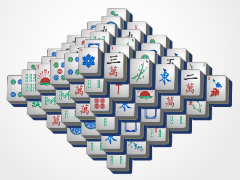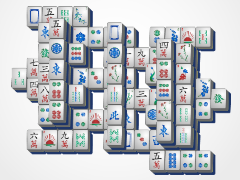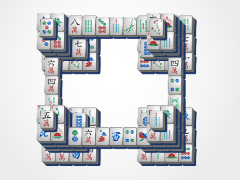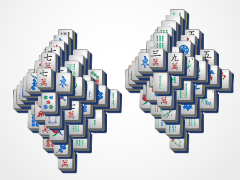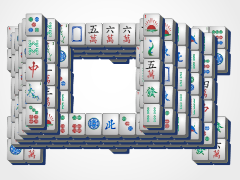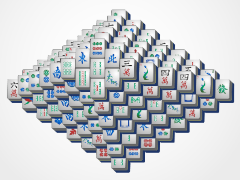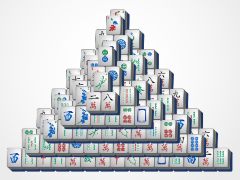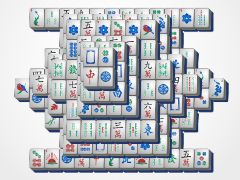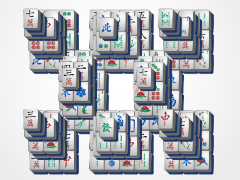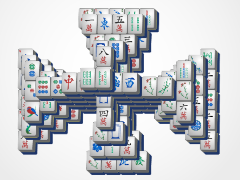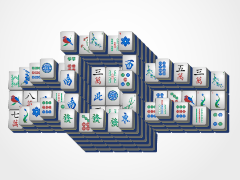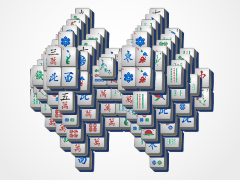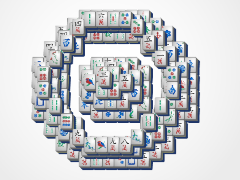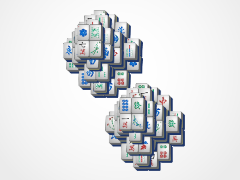Mahjong Symbolism And Cultural Significance
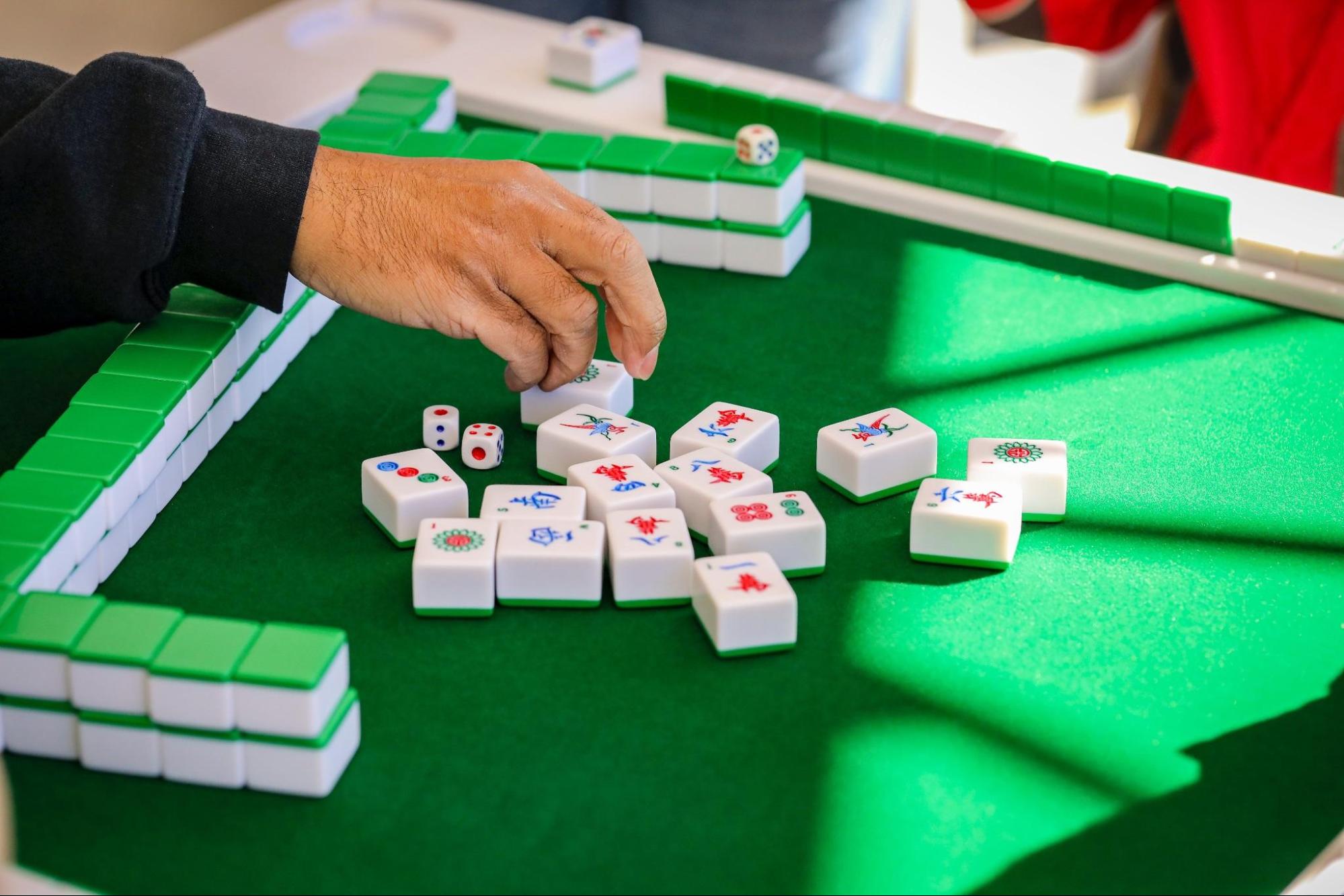
The ancient Chinese game Mahjong has stood the test of time and continues to be one of the elements that define the country’s rich history and culture. The Mahjong game isn’t just a form of entertainment for bored minds. On the contrary, it is a game that offers a glimpse into Chinese symbolism, philosophy, and traditions. Beyond the clinking of tiles, you can say that the Mahjong game teaches strategy and embodies the rich tapestry of Chinese heritage and its cultural cornerstone. This piece focuses on the cultural significance and symbolism that Mahjong presents as it holds its place not just in Chinese philosophy and culture, but globally.
Cultural Significance Of Mahjong
Mahjong holds a global reputation as a game of skill and strategy, but few know that it teaches more than that. As a social game, it is often played during family gatherings, celebrations, and festive occasions. Others believe that Mahjong has been a catalyst for social interaction and, therefore, fosters a sense of community, unity, and harmony. In Chinese culture, Mahjong goes beyond playing because the game brings with it a manifestation of shared values and human interconnectivity.
Philosophy Of Mahjong
According to Chinese philosophy, the Mahjong game embodies the principles of Yin and Yang. This represents dark and light, or in some other explanations, the shady and sunny part of a hill. The Yin and Yang Principle represents unity and the constant struggle between opposites. That includes good and bad, dark and light, weak and strong, and any other opposites you can come up with. The overarching principle of Yin and Yang makes it apt to associate it with Mahjong. Deeply steeped in balance and equilibrium, Mahjong encapsulates the essence of Yin and Yang and mirrors harmony amid complexity.
When you navigate the tiles as a player, you’re faced with the dynamic interplay of opposites. Take your time to study the game’s structural design and the rules that govern it. You will likely find how the opposites complement each other in this game. In effect, Mahjong is more than a game; it teaches you a practical lesson in finding balance in order to enjoy the game. It takes a deeper understanding of the game to appreciate the hidden philosophy embedded in Mahjong.
Mahjong Symbolism
Do you know how many tiles are in a Mahjong set? There are 144 tiles or pieces that hold symbolism while introducing you to a visually and intellectually stimulating game. It’s worth knowing what these 144 tiles represent and what they mean to the game. As carriers of profound symbolism, these tiles are categorized into suits and honor tiles, and each one has a set of dedicated meanings to enrich the player experience. If you’re a first-time player, you’ll realize that these symbolisms represent mythical creatures, seasons, and elements. These symbolisms are active representations of Chinese cultural motifs.
The Symbolic Colors in Mahjong Tiles
If you’re familiar with Chinese culture, you will notice that the color red holds great significance. It is a vibrant shade that signifies prosperity and good luck. It’s why you see red in many Chinese cultural festivities like the Spring Festival. The red color is dominant in almost every Spring Festival decor and traditional clothing. It represents good fortune, benevolence, and luck,
There are also the green-colored tiles often attributed to sincerity, harmony, and growth. It might be too much to ask you to understand the representations behind each tile color, but doing so helps you appreciate the game on a deeper level. The color symbolism is a visual element, but with a Mahjong game, there is more to learn to enhance the player experience.
Meanwhile, the whiteboard is believed to represent the Confucian virtue of filial piety, corruption, freedom, or a miss in archery. The blue tile color represents the elements - Winds. It also represents the sky or the heavens, but in Chinese culture, blue is attributed to dignity and purity.
The Role Of Mythical Creatures
Mythical creatures like the dragon and phoenix have been popular in ancient Chinese culture, and that has been the norm throughout the centuries. It’s, therefore, unsurprising that these mythical creatures are represented in Mahjong and do more for the game. According to research, the dragon tiles mean ‘three fundamental tiles’ in Chinese. The phoenix, on the other hand, means splendor, joy, and happiness.
As a player, it would help to explore, understand, and appreciate the cultural significance of these mythical creatures in ancient Chinese tradition. It goes without saying that to this day, these mythical creatures continue to dominate in modern Chinese culture. Don’t be surprised to see them represented on Mahjong tiles.
Seasonal Symbolism
The flowers and snowflakes you see on Mahjong tiles represent the seasons and the tiles’ symbolic connection to the natural world. The flower and snowflake elements also add a different dimension to the Mahjong game. They represent the cyclical and temporal dimensions of the Mahjong game and emphasize the subtle rhythm you will notice when playing it.
Traditional Mahjong Tiles And Their Representations
If you’ve ever seen traditional Mahjong tiles, you would have identified that they hold a wealth of information on symbolism ranging from life and nature to tradition. These are briefly discussed to give you a fair idea of what they are and what they represent.
Bamboo Suit
Global bamboo production comes from South China, so don’t be surprised to find them on your favorite Mahjong tiles. Bamboo represents resilience, adaptability, and growth. Nobody knows why this symbol became a crucial part of Mahjong, but the widely held belief is that bamboo cannot be separated from Chinese culture. Those intricate bamboo shoots on Mahjong tiles are meant to teach you the importance of strength, personal development, and the need to thrive in any situation.
Character Suit
The character suit symbolizes virtue, morals, and the often-overlooked aspects of human relationships. Traditional Chinese families are close-knit and known to uphold family over anything else. The characters you see on these Mahjong tiles offer a glimpse into the cultural values most Chinese hold dear to their hearts.
Circles Suit
The dots or circles on the Mahjong tiles represent perfection, unity, or ‘coming full circle.’ The lack of sharp edges on circles and dots gives more meaning to the cycle of life and man’s pursuit of completeness. Although the circle suit is a metaphorical representation, Mahjong uses it as a step towards wholeness during the game of play.
Winds
Many mythical Chinese movies mention the four winds - East, West, North, and South. In geography, these are the four cardinal points of the compass, but they mean so much more in a Mahjong game. In short, they represent changes and challenges. The East Wind represents renewal and new beginnings. This takes after the sun rising from the east. The West Wind is in sharp contradiction to the east as it represents reflection and the setting sun. The South Wind is meant to project warmth and prosperity, while the North Wind stands for life’s changes and challenges, with a subtle reference to resetting your life to the true north.
The Art Of Interpretation
As indicated in earlier paragraphs, symbolism enriches the Mahjong playing experience. However, you can’t appreciate the symbolism without understanding the art of interpretation. It takes a fair balance between cultural and intellectual exercise to interpret these symbols and connect them to Chinese culture. However, it is important to understand these symbols in different cultural and personal contexts. A symbol may mean one thing in a cultural setting and will differ in another, even within the same country. So, your interpretation of these arts will depend on where you’re from in China. That will be discussed further in the next point.
Regional Variations In Symbolism
As discussed in the earlier point, regions and communities define Mahjong symbols differently. The infusion of individual cultures influences regional variations in symbolism. This shows China’s dynamic and diverse cultural landscape. For instance, in Guangdong Province, where you will find Cantonese Mahjong, the Red Dragon signifies good fortune, whereas, in other places, it represents power and a warrior attitude.
Meanwhile, Shanghai Mahjong shows certain variations in its Circle suit. They often depict landmarks specific to Shanghai and with some geographic touch, it’s easy to tell where the game is coming from, only if you’re familiar with Shanghainese architecture.
Sichuan Mahjong is quite different from what pertains to other regions and communities in China. Its fast-paced gameplay is what catches your eye. Aside from that, you cannot ignore the rich cultural display that the Sichuan Mahjong displays in its tiles. You will find the famous Leshan Giant Buddha landmark, Sichuan cuisine, and their traditional opera.
Taiwanese Mahjong is mostly folklore and mythology, and you’re bound to see the ‘Jiufen’ mythical creature. Take a closer look at the tiles, and you will find historic Taiwanese temples that may give other similar structures a run for their money. The infusion of distinctive Tawainese culture makes a beautiful rendition of this centuries-old Chinese game.
Hong Kong Mahjong is also known to pay homage to traditional Chinese symbolism. However, it creates room for the city’s iconic architectural pieces and unique symbols. You wouldn’t find it difficult to identify these pictures and symbols if you’ve been to Hong Kong and are familiar with its skyline. Hong Kong uniquely blends Eastern and Western influences to show a distinctive regional variation in its Mahjong symbolism.
The Evolution Of Mahjong Symbols
As with many things in the world, evolution plays a significant role in change, order, and people’s perception. The following explanations provide information on things or elements that necessitated the evolution of Mahjong symbols.
Cultural Diversity
As the Mahjong game gained popularity across China, different provinces and communities adapted to it. However, they wanted to incorporate symbols and art that represented them and their local culture. As that happened, the diversity kickstarted a chain of events where you can now find variations in Mahjong symbolism.
Folklore And Mythology Influence
With a population exceeding one billion, you cannot help but admire the number of folklore and mythology content in China. Different provinces and communities have legends and unique stories intricately connected to their cultures. Over time, these unique stories and legends were embedded into the game’s symbolism. As Mahjong gradually became a story-telling medium, it was only a matter of time before the influence contributed to the game’s evolution.
Artistic Expression And Aesthetics
Take a Mahjong tile and have a good look at it. What strikes you the most after observing the intricate drawings and designs on them? They are pure works of art, and you wouldn’t be wrong to conclude that they had an influence on the game’s evolution. Artistic expression and aesthetics sparked an unspoken competition among Mahjong designers. Mahjong symbols got more sophisticated, earning the craftsmanship wider recognition. To this day, craftsmanship continues to incorporate more aesthetics and artistic expression into the tiles. For many people, the infusion of aesthetics and artistic expression compels them to choose a Mahjong set over the other.
Commercial Production And Market Demand
It’s easy to conclude that artistic and aesthetic influence gave rise to commercial production and market demand. Naturally, when the market expresses a need, businesses or manufacturers rise to the occasion. By catering to different markets, manufacturers can determine which symbols and designs are preferable and sell quickly. As indicated in the earlier point, the market continues to demand more visually appealing and culturally relevant sets that resonate more with them. You can deduce from this point that the Mahjong symbolism is still undergoing an evolution and will continue to do so.
Changes In Political And Social Contexts
It’s worth noting that Mahjong symbols had periods of political and social influence. Symbols represented different historical eras that had specific political ideologies. These movements found their way onto Mahjong tiles and, over time, reflected the political and social climate. Mahjong tiles became the subtle mouthpiece in eras when people avoided these sensitive topics. Before you go any further, this is in no way saying that this loved Mahjong game has ever had political undertones. On the contrary, certain symbols were used to depict different historical eras.
Globalization And Cultural Exchange
Having transcended its Chinese origins, Mahjong has gained popularity, and people from different cultures appreciate the game. While this is commendable, it’s worth noting that more people are adding their preferences and interpretations to the game. Players from different backgrounds are leading the cross-cultural exchanges and influencing the game’s evolution. Undoubtedly, it is excellent news that Mahjong is making waves outside its Chinese origins.
Technological Advancements
Production techniques have changed over time, and technology has played a significant role in that. This tech-aided evolution has created finer details, intricate designs, and aesthetics that rival handcrafted early Mahjong set versions. You will also notice a broader color palette that handcrafted versions do not have. You can be sure that Mahjong sets will continue to undergo tech-aided changes, and players will love to purchase newer and modern versions.
Cultural Rituals Associated With Mahjong
The cultural phenomenon associated with Mahjong opens the way for certain rituals, routines, or peculiarities. These rituals elevate the experience and give reverence to this ancient game. Beyond the strategic gameplay and symbolic tiles, this culturally representative game transcends mere tile shifting. Here is why:
Seating Arrangements And Etiquette
Tradition dictates that players be seated in specific positions that align with the compass points. Do you remember the four winds and their symbolizations in earlier points? This time around, the East seat shows the start of a new cycle, and this position symbolizes prestige. The West, South, and North seats hold their cultural significance, but their interpretations depend on the province or community playing the game.
Initiation Ceremonies
This is especially reserved for newcomers to the game, and that is when you will feel the communal nature of Mahjong. The ritual involves experienced players guiding newbies in dealing, shuffling, and playing the tiles. As mentors, they are compelled to pass on centuries-old oral traditions and tips while imbibing cultural values into new players. Newcomers must learn the rules and go through the process before they can call themselves masters or gurus of the Mahjong game.
Tea Culture And Refreshment
What’s a Mahjong session without tea sipping? This enhances the game’s social ambiance and becomes the main source of refreshment. However, it’s not all about drinking or sipping tea. The art of brewing and serving has for many years been considered Mahjong game rituals. These are the integral parts of the game that foster camaraderie and a love for Mahjong.
Use Of Specific Objects
The decorative dice cups, ornate tiles, and special tables add to the ritual feel of the Mahjong game. Usually, these objects are passed down through several generations and boost the reverence many feel towards the game. These are parts of cultural appreciation and give meaning to symbol continuity.
Understanding the unique game of Mahjong, its symbolism, and cultural significance will help you enjoy this beloved game even more.
247 Mahjong Puzzles
Seasonal Mahjong Games
More Games
Mahjong News
Disclaimer
DISCLAIMER: The games on this website are using PLAY (fake) money. No payouts will be awarded, there are no "winnings", as all games represented by 247 Games LLC are free to play. Play strictly for fun.


